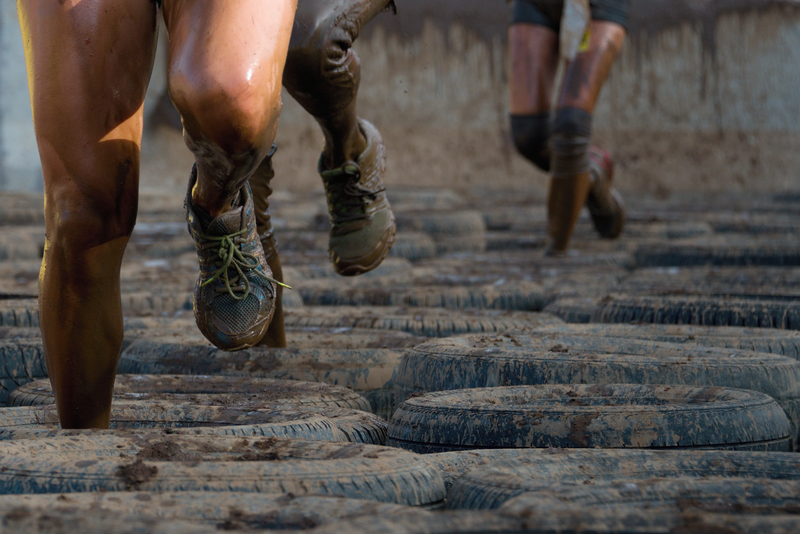Solutions for Handling and Disposing of PPE Waste Responsibly
The global demand for Personal Protective Equipment (PPE) has surged in recent years, particularly in response to health crises and increased awareness about individual protection. However, the rise in PPE usage has brought with it a new environmental challenge--effective and responsible management of PPE waste. In this comprehensive guide, we discuss best solutions for handling and disposing of PPE waste responsibly, highlighting actionable steps, sustainable practices, and innovative alternatives to minimize environmental impact.

Understanding the Growing Problem of PPE Waste
The widespread use of face masks, gloves, gowns, and face shields--collectively referred to as PPE--has been a vital defense against disease transmission in medical settings, public spaces, and everyday life. However, most PPEs are designed for single use and are made of non-biodegradable materials like plastics, leading to mounting volumes of waste.
- Millions of disposable face masks are discarded every day globally.
- Improperly disposed PPE can contaminate water bodies, clog sewer systems, and endanger wildlife.
- PPE waste often contains potential biohazards, making responsible disposal critical to public health and safety.
Pillars of Responsible PPE Waste Management
Dealing with PPE waste involves more than just throwing it in the trash. It requires a strategic, multi-faceted approach that combines safety, environmental consciousness, and public awareness. The following solutions outline best practices and innovative strategies for sustainable PPE disposal.
1. Segregation at Source: The First Step to Responsible PPE Disposal
Proper segregation of PPE waste is crucial. Mixing PPE waste with regular trash increases contamination risks and complicates recycling efforts.
- Color-coded bins: Use clearly labeled, differentiable bins for collecting PPE like masks and gloves separately from regular waste.
- Designated PPE waste stations: Set up dedicated stations in hospitals, offices, schools, and public areas.
- Cover, close, and seal: Ensure PPE bins have lids and encourage users to seal used PPE in bags before discarding.
2. Safe Collection and Transportation
_Collection and transportation_ of PPE waste must adhere to stringent safety protocols. Workers involved should be equipped with suitable protective gear themselves and trained in biohazard handling.
- Use leak-proof bags and containers for PPE waste.
- Regularly disinfect collection points and vehicles.
- Maintain records to track PPE waste volumes and sources.
3. Disinfection and Pre-Treatment of PPE Waste
? Since PPE may be contaminated with infectious agents, it is critical to disinfect or pre-treat these items before final disposal. Common methods include:
- Autoclaving: High-pressure steam sterilization kills pathogens on medical waste, making PPE safe for further handling.
- Chemical disinfection: Use of chlorine-based solutions or other EPA-approved disinfectants.
- Microwave treatment: Microwaves can also neutralize contaminants in PPE waste.
4. Final Disposal Methods: Incineration & Landfilling
Properly processed PPE waste requires secure disposal. The two major options are:
- Incineration: High-temperature incinerators can destroy pathogens and reduce PPE waste to ash. However, this method must be carefully managed to control emissions of toxic chemicals such as dioxins and furans. Modern incinerators use air pollution control systems to limit environmental impact.
- Sanitary Landfilling: If incineration is not feasible, Robust, lined sanitary landfills designed for hazardous or medical waste can safely contain PPE. PPE must be compacted and covered immediately to prevent windblown litter and accidental contact.
Innovative and Sustainable Alternatives for PPE Waste Management
1. Recycling and Upcycling Initiatives
Can PPE be recycled? It's challenging, but not impossible. Many items, like disposable masks and gloves, are made from polypropylene--an easily recyclable plastic. However, contamination concerns often preclude them from standard recycling streams.
- Specialized recycling companies now offer programs to collect, disinfect, and recycle single-use PPE into items like:
- Plastic pellets for furniture or construction materials
- Road paving aggregate
- Protective equipment for non-medical uses
- Upcycling art and community projects: Some organizations transform cleaned PPE into public artworks or industrial products, raising awareness of waste issues.
2. Biodegradable and Reusable PPE Solutions
_The ultimate path to minimizing PPE waste lies in sustainable product innovation._
- Biodegradable masks and gloves: Companies are developing PPE made from renewable materials like bamboo fiber or bioplastic, which decompose faster than traditional synthetics.
- Reusable PPE: High-quality, durable, and washable PPE options reduce waste at the source. Medical-grade reusable respirators and cloth masks are now widely available.
- Take-back and refill programs: Hospitals and organizations can implement programs to clean and reuse PPE items, reducing reliance on single-use options.
Guidelines and Regulations for PPE Waste Handling
Compliance with local and international PPE waste management standards ensures the safety and effectiveness of disposal processes. Below are key regulatory frameworks and guidelines:
- WHO Guidelines: The World Health Organization issues protocols for the segregation, collection, and treatment of healthcare waste, including PPE.
- OSHA Standards: The Occupational Safety and Health Administration mandates safe handling of potentially infectious waste in workplace settings.
- National Waste Management Policies: Many countries now have specialized rules governing medical and PPE waste.
Community Engagement and Public Education
Public participation is essential for effective PPE waste solutions. Educating communities through:
- Clear labels and instructions on waste bins
- Information campaigns on social media and signage in public areas
- School and workplace training sessions about proper PPE disposal
Corporate Responsibility: How Businesses Can Lead the Way
_Enterprises generate significant PPE waste, but they also have the capacity to implement best practices and drive positive change._ Actions businesses can take include:
- Adopting and promoting reusable or biodegradable PPE
- Partnering with specialized PPE waste recycling firms
- Establishing clear PPE waste collection points in their premises
- Providing regular training and awareness programs for staff
Challenges and Future Directions in PPE Waste Management
Despite available solutions, challenges remain in the journey towards sustainable PPE waste handling, such as:
- Lack of infrastructure for specialized collection, transportation, and treatment
- Limited public awareness and inconsistent compliance
- High costs associated with advanced recycling or incineration
- Emerging variants of hazardous PPE which are hard to process

Best Practices for Handling and Disposing of PPE Waste in Daily Life
Even on a personal level, each of us can contribute to responsible PPE waste solutions. Here's how:
- Never litter masks or gloves in public spaces. Carry a small bag to store used PPE until you can dispose of it properly.
- Always wash your hands before and after handling used PPE.
- Use reusable masks and washable gloves whenever possible.
- Opt for PPE products labeled as biodegradable or recyclable.
- Follow local disposal guidelines strictly to ensure your PPE doesn't end up harming the environment or others.
Conclusion: Building a Sustainable Future with Responsible PPE Waste Disposal
As our world continues to rely on PPE for protection and health, the challenge of responsible PPE waste handling and disposal grows more urgent. Combining individual action, community engagement, corporate leadership, and innovation is essential to manage this new waste stream safely and sustainably. From proper segregation and secure disposal to supporting recycling programs and choosing alternatives, every step makes a difference. By committing to these comprehensive PPE waste management solutions, we help protect not only our own health but also that of our environment and future generations.
Take action today--dispose of your PPE responsibly and be a part of the solution!